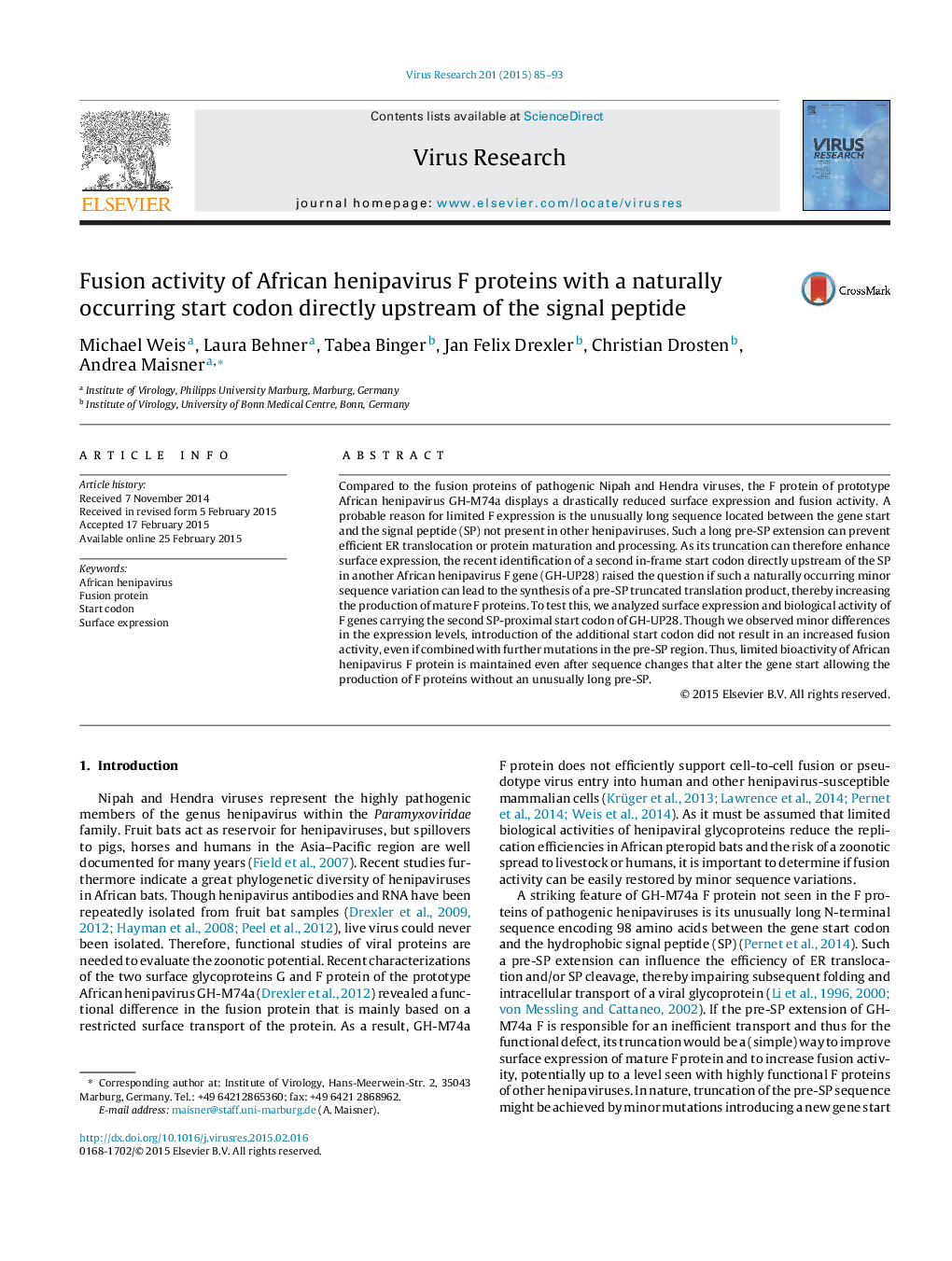| Article ID | Journal | Published Year | Pages | File Type |
|---|---|---|---|---|
| 3428165 | Virus Research | 2015 | 9 Pages |
•Surface expression and fusion activity of African Henipavirus F protein is highly limited.•Restricted expression is not due to the unusually long pre-SP sequence (98 amino acids).•Fusion activities of truncated mutants with a naturally occurring SP-proximal start codon remained limited.•The role of restricted bioactivity for virus spread in and from bats is discussed.
Compared to the fusion proteins of pathogenic Nipah and Hendra viruses, the F protein of prototype African henipavirus GH-M74a displays a drastically reduced surface expression and fusion activity. A probable reason for limited F expression is the unusually long sequence located between the gene start and the signal peptide (SP) not present in other henipaviruses. Such a long pre-SP extension can prevent efficient ER translocation or protein maturation and processing. As its truncation can therefore enhance surface expression, the recent identification of a second in-frame start codon directly upstream of the SP in another African henipavirus F gene (GH-UP28) raised the question if such a naturally occurring minor sequence variation can lead to the synthesis of a pre-SP truncated translation product, thereby increasing the production of mature F proteins. To test this, we analyzed surface expression and biological activity of F genes carrying the second SP-proximal start codon of GH-UP28. Though we observed minor differences in the expression levels, introduction of the additional start codon did not result in an increased fusion activity, even if combined with further mutations in the pre-SP region. Thus, limited bioactivity of African henipavirus F protein is maintained even after sequence changes that alter the gene start allowing the production of F proteins without an unusually long pre-SP.
